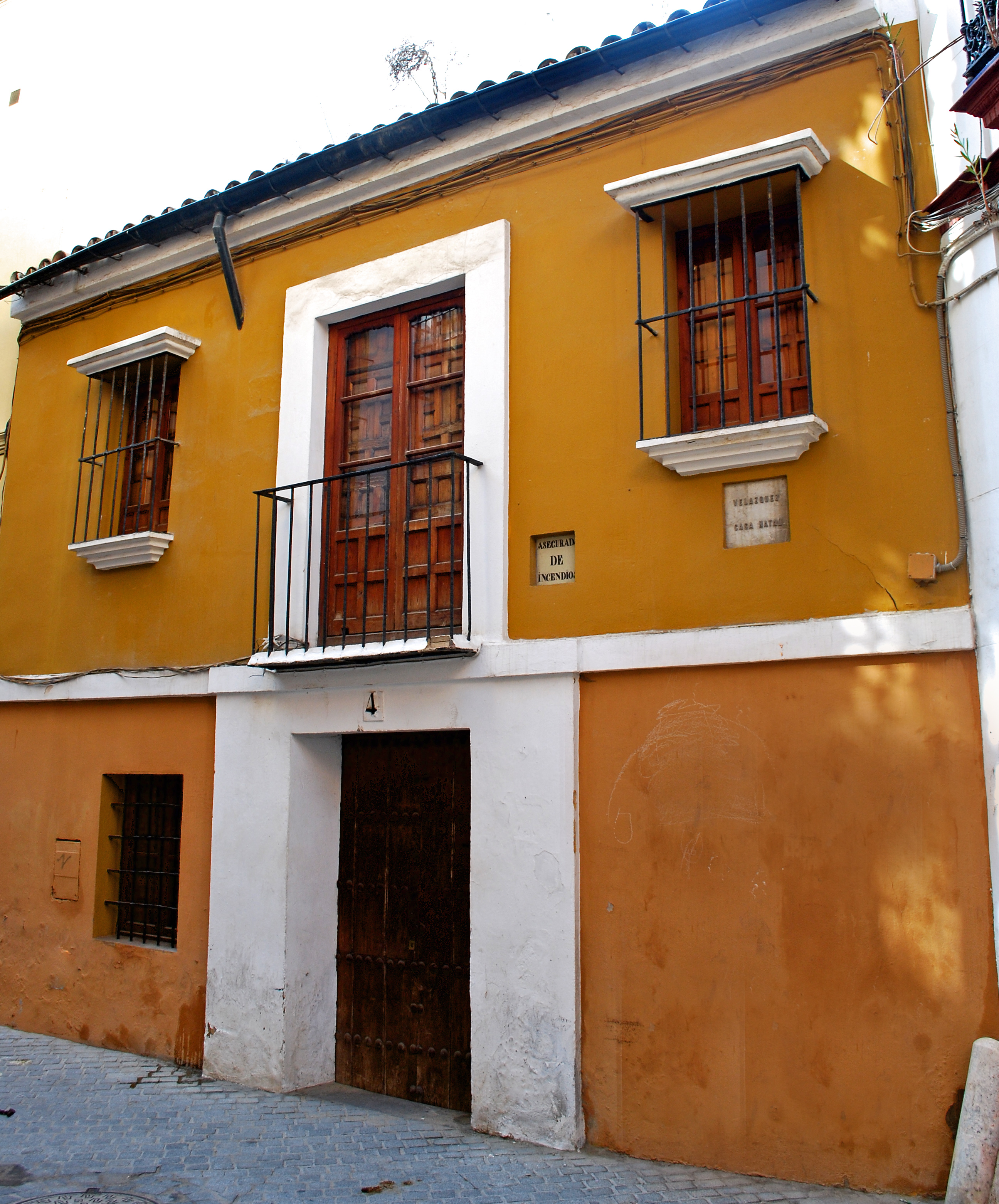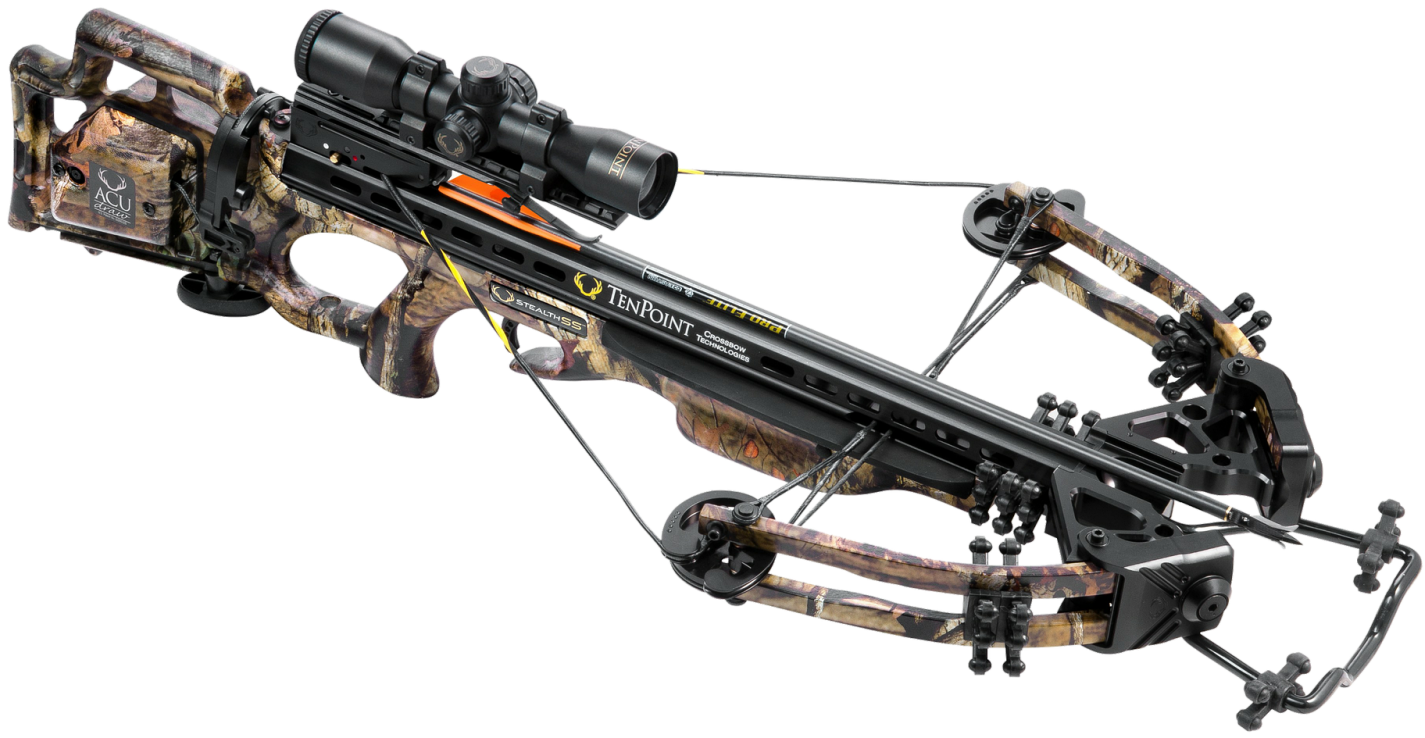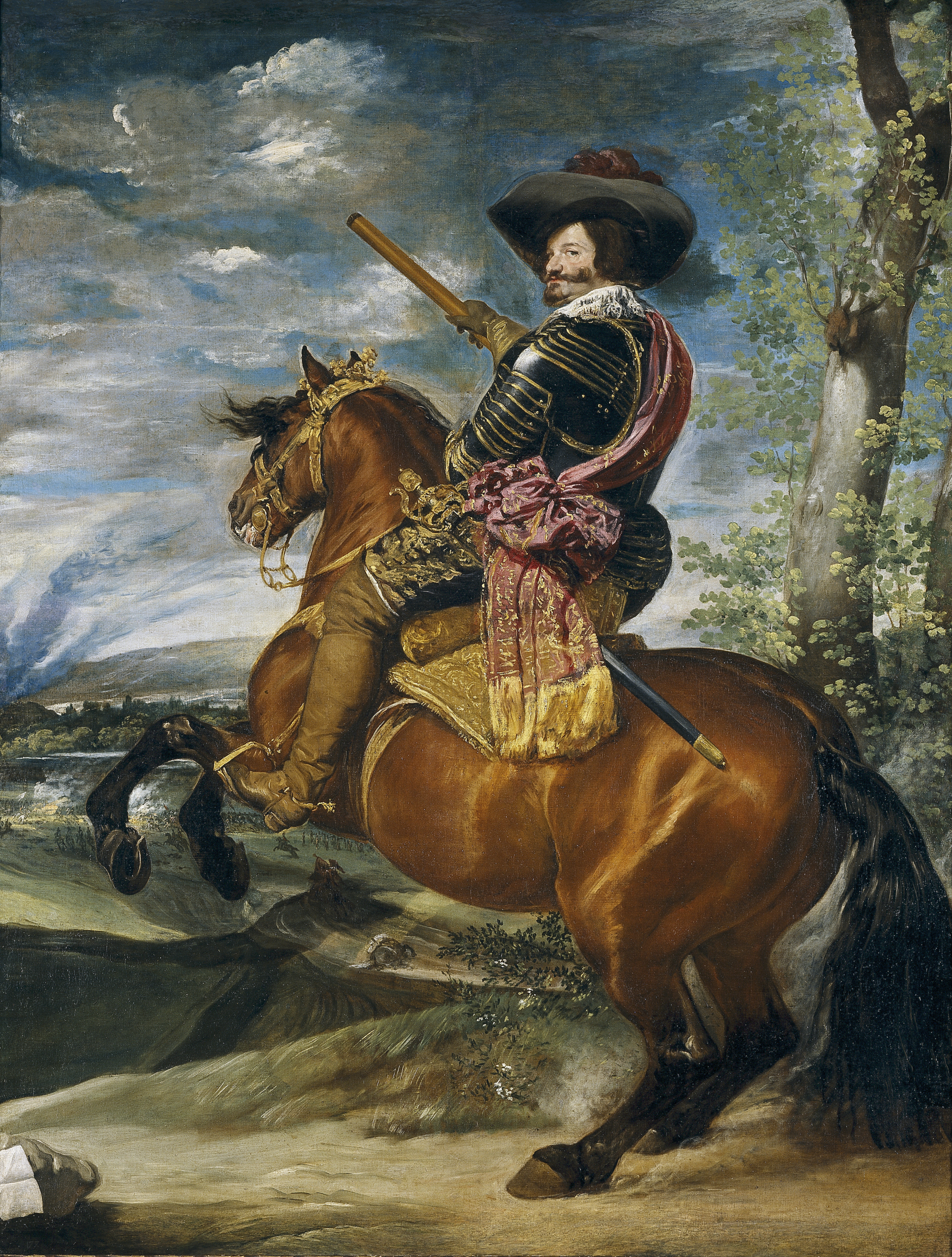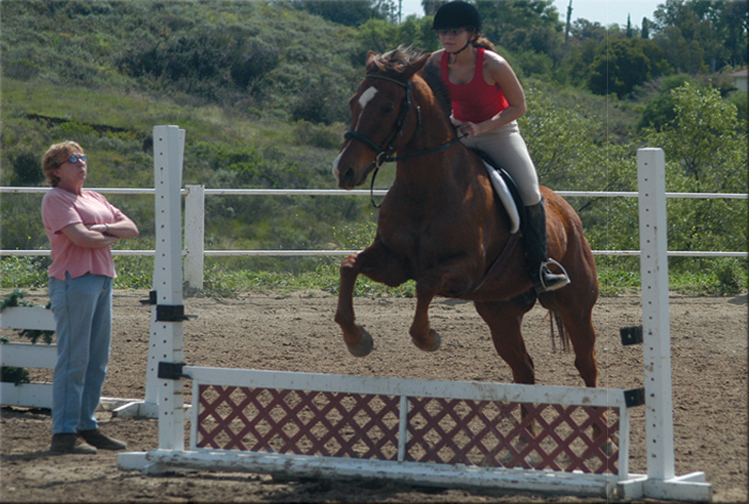|
Alonso Martínez De Espinar
Alonso Martínez de Espinar (5 May 158814 May 1682) was a Spanish courtier and one of three important writers on venery (hunting), venery of the Spanish Baroque literature, Spanish Baroque. He was a ''ballestero'' ("crossbowman") and arquebusier to several kings of Spain. Life Martínez de Espinar was the son of Cristóbal Martínez de Espinar, of Baza, Granada, Baza in province of Granada, Granada, and Juana Hernández Sacristán, who was from Brunete in the provinces of Spain, province of Madrid. He was baptised in the church of San Martín, Madrid, San Martín in Madrid. He had a sister, Jerónima Martínez de Espinar, who married Alonso Mateos, who was ''ballestero'' to the King of Spain and the brother of Juan Mateos (courtier), Juan Mateos, author of another important book on venery. Pictorial representations Martínez de Espinar appears in the original version of ''Prince Baltasar Carlos in the Riding School'' painted by Diego Velázquez at the Palacio del Buen R ... [...More Info...] [...Related Items...] OR: [Wikipedia] [Google] [Baidu] |
Museo Del Greco
The El Greco Museum () is a single-artist museum in Toledo, Spain, Toledo, Spain, devoted to the work and life of El Greco (Domenikos Theotokopoulos, 1541–1614), who spent much of his life in Toledo, having been born in Fodele, Crete. It is one of the National Museums of Spain and it is attached to the Ministry of Culture (Spain), Ministry of Culture. The house and museum The museum first opened in 1911 and is located in the Jewish quarter (diaspora), Jewish Quarter of Toledo. It consists of two buildings, a 16th-century house with a courtyard and an early 20th century building forming the museum, together with a garden. The house recreates the home of El Greco, which no longer exists. The museum houses many artworks by El Greco, especially from his late period. There are also paintings by other 17th-century Spanish artists, as well as furniture from the period and pottery from Talavera de la Reina in the Province of Toledo. File:"Casa del Greco" (Toledo). Portada.jpg, Entranc ... [...More Info...] [...Related Items...] OR: [Wikipedia] [Google] [Baidu] |
Diego Velázquez
Diego Rodríguez de Silva y Velázquez (baptised 6 June 15996 August 1660) was a Spanish painter, the leading artist in the Noble court, court of King Philip IV of Spain, Philip IV of Spain and Portugal, and of the Spanish Golden Age. He is generally considered one of the greatest artists in the history of Art of Europe, Western art. He was an individualistic artist of the Baroque period (). He began to paint in a precise Tenebrism, tenebrist style, later developing a freer manner characterized by bold brushwork. In addition to numerous renditions of scenes of historical and cultural significance, he painted scores of portrait painting, portraits of the Spanish royal family and commoners, culminating in his masterpiece (1656). Velázquez's paintings became a model for 19th century realism (art movement), realist and impressionism, impressionist painters. In the 20th century, artists such as Pablo Picasso, Salvador Dalí, and Francis Bacon (artist), Francis Bacon paid trib ... [...More Info...] [...Related Items...] OR: [Wikipedia] [Google] [Baidu] |
Crossbow
A crossbow is a ranged weapon using an Elasticity (physics), elastic launching device consisting of a Bow and arrow, bow-like assembly called a ''prod'', mounted horizontally on a main frame called a ''tiller'', which is hand-held in a similar fashion to the stock (firearms), stock of a long gun. Crossbows shoot arrow-like projectiles called ''crossbow bolt, bolts'' or ''quarrels''. A person who shoots crossbow is called a ''crossbowman'', an ''arbalister'' or an ''arbalist (crossbowman), arbalist'' (after the arbalest, a European crossbow variant used during the 12th century). Crossbows and bows use the same elastic launch principles, but differ in that an archer using a Bow and arrow, bow must draw-and-shoot in a quick and smooth motion with limited or no time for aiming, while a crossbow's design allows it to be spanned and cocked ready for use at a later time and thus affording them unlimited time to aim. When shooting bows, the archer must fully perform the bow draw, draw, h ... [...More Info...] [...Related Items...] OR: [Wikipedia] [Google] [Baidu] |
Francisco De Quevedo Villegas
Francisco Gómez de Quevedo y Santibáñez Villegas, Knight of the Order of Santiago (; 14 September 1580 – 8 September 1645) was a Spanish nobleman, politician and writer of the Baroque era. Along with his lifelong rival, Luis de Góngora, Quevedo was one of the most prominent Spanish poets of the age. His style is characterized by what was called ''conceptismo''. This style existed in stark contrast to Góngora's ''culteranismo''. Biography Quevedo was born on 14 September 1580 in Madrid into a family of '' hidalgos'' from the village of Vejorís, located in the northern mountainous region of Cantabria. His family was descended from the Castilian nobility. Quevedo's father, Francisco Gómez de Quevedo, was secretary to Maria of Spain, daughter of emperor Charles V and wife of Maximilian II, Holy Roman Emperor, and his mother, Madrid-born María de Santibáñez, was lady-in-waiting to the queen. Quevedo matured surrounded by dignitaries and nobility at the royal court ... [...More Info...] [...Related Items...] OR: [Wikipedia] [Google] [Baidu] |
Preface
__NOTOC__ A preface () or proem () is an introduction to a book or other literature, literary work written by the work's author. An introductory essay written by a different person is a ''foreword'' and precedes an author's preface. The preface often closes with acknowledgments of those who assisted in the literary work. It often covers the story of how the book came into being, or how the idea for the book was developed; this may be followed by thanks and acknowledgments to people who were helpful to the author during the time of writing. A preface is often signed (and the date and place of writing often follow the typeset signature); a foreword by another person is always signed. Information essential to the main text is generally placed in a set of explanatory notes, or perhaps in an "Introduction" that may be paginated with Arabic numerals, rather than in the preface. The term ''preface'' can also mean any preliminary or introductory statement. It is sometimes abbreviated ''p ... [...More Info...] [...Related Items...] OR: [Wikipedia] [Google] [Baidu] |
Museo Del Prado
The Museo del Prado ( ; ), officially known as Museo Nacional del Prado, is the main Spanish national art museum, located in central Madrid. It houses collections of Art of Europe, European art, dating from the 12th century to the early 20th century, based on the former Spanish royal collection, and the single best collection of Spanish art. Founded as a museum of paintings and sculpture in 1819, it also contains important collections of other types of works. The numerous works by Francisco Goya, the single most extensively represented artist, as well as by Hieronymus Bosch, El Greco, Peter Paul Rubens, Titian, and Diego Velázquez, are some of the highlights of the collection. Velázquez and his keen eye and sensibility were also responsible for bringing much of the museum's fine collection of Italian masters to Spain, now one of the largest outside of Italy. The collection currently comprises around 8,200 drawings, 7,600 paintings, 4,800 prints, and 1,000 sculptures, in additi ... [...More Info...] [...Related Items...] OR: [Wikipedia] [Google] [Baidu] |
Engraving
Engraving is the practice of incising a design on a hard, usually flat surface by cutting grooves into it with a Burin (engraving), burin. The result may be a decorated object in itself, as when silver, gold, steel, or Glass engraving, glass are engraved, or may provide an Intaglio (printmaking), intaglio printing plate, of copper or another metal, for printing images on paper as prints or illustrations; these images are also called "engravings". Engraving is one of the oldest and most important techniques in printmaking. Wood engravings, a form of relief printing and stone engravings, such as petroglyphs, are not covered in this article. Engraving was a historically important method of producing images on paper in artistic printmaking, in mapmaking, and also for commercial reproductions and illustrations for books and magazines. It has long been replaced by various photographic processes in its commercial applications and, partly because of the difficulty of learning the techni ... [...More Info...] [...Related Items...] OR: [Wikipedia] [Google] [Baidu] |
Frontispiece (book)
A frontispiece in books is a decorative or informative illustration facing a book's title page, usually on the left-hand, or verso, page opposite the right-hand, or recto page of a book. In some ancient editions or in modern luxury editions the frontispiece features thematic or allegorical elements, in others is the author's portrait that appears as the frontispiece. In medieval illuminated manuscripts, a presentation miniature showing the book or text being presented (by whom and to whom varies) was often used as a frontispiece. Etymology The word comes from the French ''frontispice'', which derives from the late Latin ''frontispicium'', composed of the Latin ''frons'' ('forehead') and ''specere'' ('to look at'). It was synonymous with ' metoposcopy'. In English, it was originally used as an architectural term, referring to the decorative facade of a building. In the 17th century, in other languages as in Italian, the term came to refer to the title page of a book, which at ... [...More Info...] [...Related Items...] OR: [Wikipedia] [Google] [Baidu] |
Isabel Of Bourbon
Elisabeth of France, also known as Isabel or Elisabeth of Bourbon (22 November 1602 – 6 October 1644) was List of Spanish royal consorts, Queen of Spain from 1621 to her death and List of Portuguese royal consorts, Queen of Portugal from 1621 to 1640, as the first spouse of King Philip IV & III. She served as regent of Spain during the Reapers' War, Catalan Revolt in 1640–42 and 1643–44.Diccionario Biográfico. Real Academia de la Historia ''Isabel de Borbón'' As the mother of the Queen of France Maria Theresa, Queen of France, Maria Theresa, wife of Louis XIV, she was the great-grandmother of the Duke of Anjou, who became king of Spain as Philip V of Spain, Philip V. Through her daughter, Elisabeth is the progenitor of the Spanish branch of the House of Bourbon, which still rule ... [...More Info...] [...Related Items...] OR: [Wikipedia] [Google] [Baidu] |
King Philip IV Of Spain
Philip IV (, ; 8 April 160517 September 1665), also called the Planet King (Spanish: ''Rey Planeta''), was King of Spain from 1621 to his death and (as Philip III) King of Portugal from 1621 to 1640. Philip is remembered for his patronage of the arts, including such artists as Diego Velázquez, and his rule over Spain during the Thirty Years' War. By the time of his death, the Spanish Empire had reached approximately 12.2 million square kilometres (4.7 million square miles) in area but in other aspects was in decline, a process to which Philip contributed with his inability to achieve successful domestic and military reform. He was succeeded on his death by his young son Charles II as King of Spain and in 1640 (with the collapse of the Iberian Union) by John IV as King of Portugal. Personal life Philip IV was born in the Royal Palace of Valladolid, and was the eldest son of Philip III and his wife, Margaret of Austria. In 1615, at the age of 10, Philip was marr ... [...More Info...] [...Related Items...] OR: [Wikipedia] [Google] [Baidu] |
Balthasar Charles, Prince Of Asturias
Balthasar Charles (Spanish: ''Baltasar Carlos de Austria''; 17 October 1629 – 9 October 1646), Prince of Asturias, Prince of Girona, Duke of Montblanc, Count of Cervera, and Lord of Balaguer, Prince of Viana was heir apparent to all the kingdoms, states and dominions of the Spanish monarchy from his birth until his death. Life The only son of King Philip IV of Spain and his first wife, Elisabeth of France, Balthasar Charles was born in the Royal Palace of Madrid on 17 October 1629. He was baptized on 4 November 1629 in the Parish of San Juan, Madrid. His godparents were Maria Anna, Holy Roman Empress and Infante Charles, aunt and uncle of the newborn. On 7 March 1632, Balthasar Carlos was sworn in before the Nobility of Castile as "His Majesty's Heir" and "Prince of these kingdoms of Castile and Leon, and others that are subject to these Crowns, united and incorporated", in a ceremony held at the Monastery of San Jerónimo el Real of Madrid. Inés de Zúñiga ... [...More Info...] [...Related Items...] OR: [Wikipedia] [Google] [Baidu] |
Riding-master
{{short description, Person whose job it is to teach methods of horse riding A riding instructor is a person whose job it is to teach methods of horse riding (and also horse care) to beginners and improve the intermediate and advanced rider's style and technique. A riding instructor may also serve as a coach for a rider in competition. Some instructors may work out of their own riding facility, others at a riding school or training center. With appropriate academic credentials, some may teach in a college or university equestrian studies program. Yet others freelance and travel from stable to stable. Accreditation In much of the world, there are no formal requirements or licensing for riding instructors. However, in Great Britain and in most of Europe, there are recognised bodies who are accredited bodies for awarding qualifications. The International Group for Equestrian Qualifications provides membership for many awarding bodies and federations from around the world. Instru ... [...More Info...] [...Related Items...] OR: [Wikipedia] [Google] [Baidu] |








